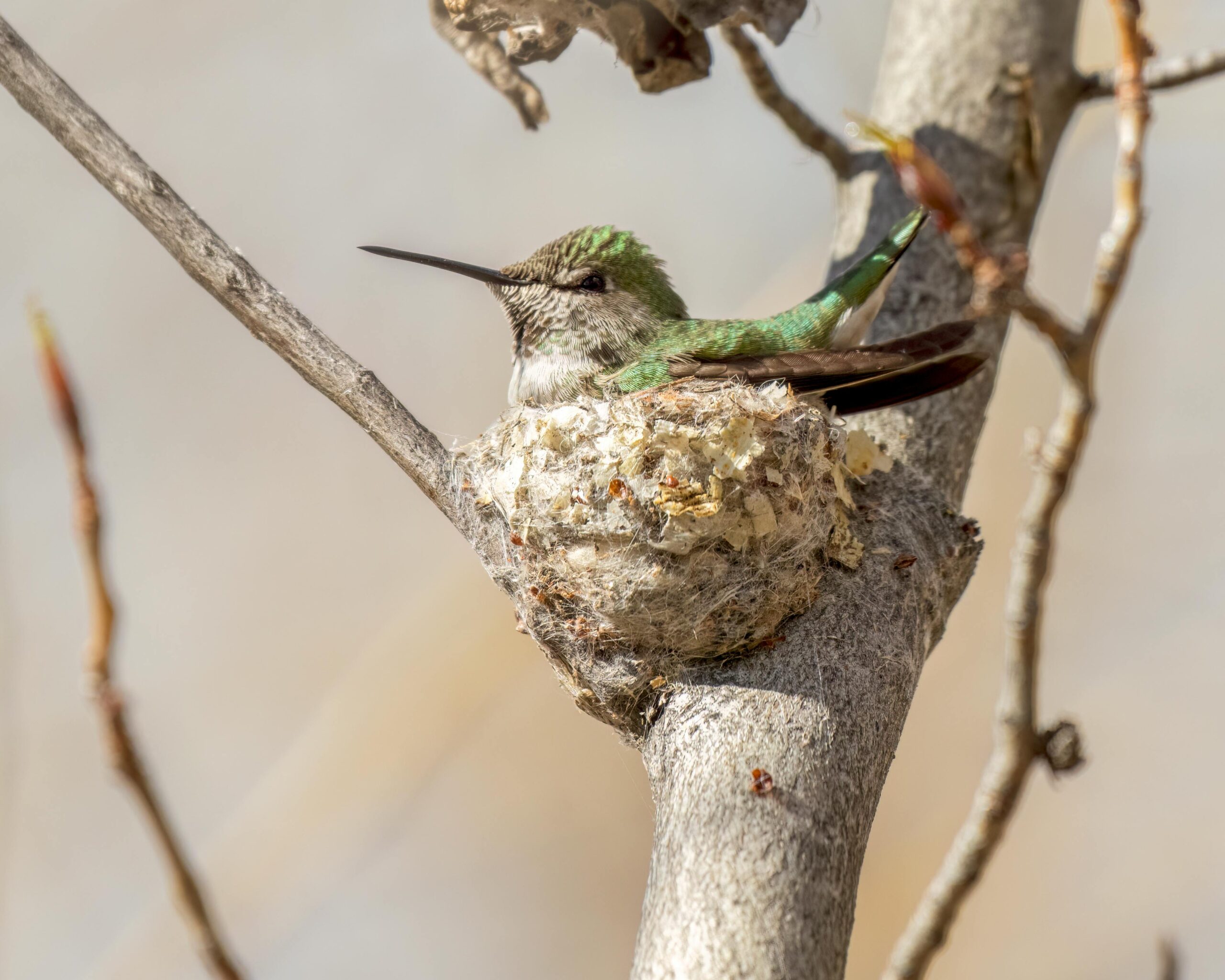It’s hard not to smile when you spot a hummingbird. Their colorful bodies and quick, darting movements make them the quintessential free spirits of the bird world. And during their nesting season, you have even more chances to enjoy them. Here’s how to turn your yard into a haven for nesting hummingbirds.
When is Hummingbird Nesting Season?
The short answer: it depends on the type of hummingbird. For example, Anna’s Hummingbirds typically nest early, from December to June. Allen’s Hummingbirds, another hummer found in the Big Bear Valley, nest from February through July, and sometimes as late as August. And though the nesting season for Costa’s Hummingbirds and Black-chinned Hummingbirds is wrapping up right now (late spring), Rufous Hummingbirds are still nesting through July or August.
How to Make Your Yard Attractive to Nesting Hummingbirds
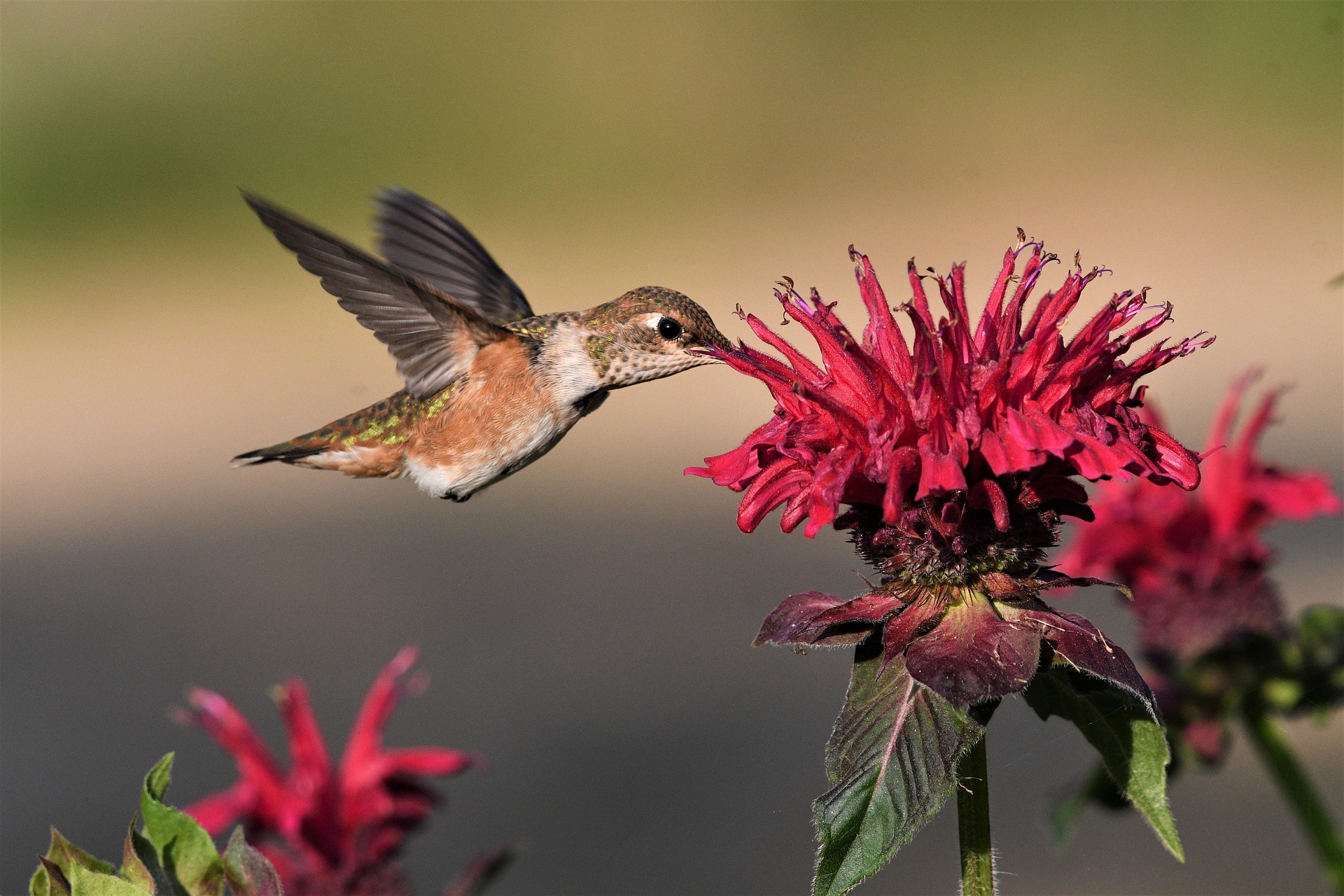
First off, let’s talk about what you DON’T need: a birdhouse. Hummingbirds won’t use them. Instead, they build their own nests in shrubs and trees. Another thing to ditch? Chemicals. Nesting hummingbirds are looking for somewhere safe to raise their young, and they will avoid your yard if it’s full of harmful pesticides.
Read about the harmful effects of pesticides on birds and other wildlife, and get natural pest-control alternatives in the Chirp blog post “Poison-Free Pest Control.”
Now for what you’ll need:
Food
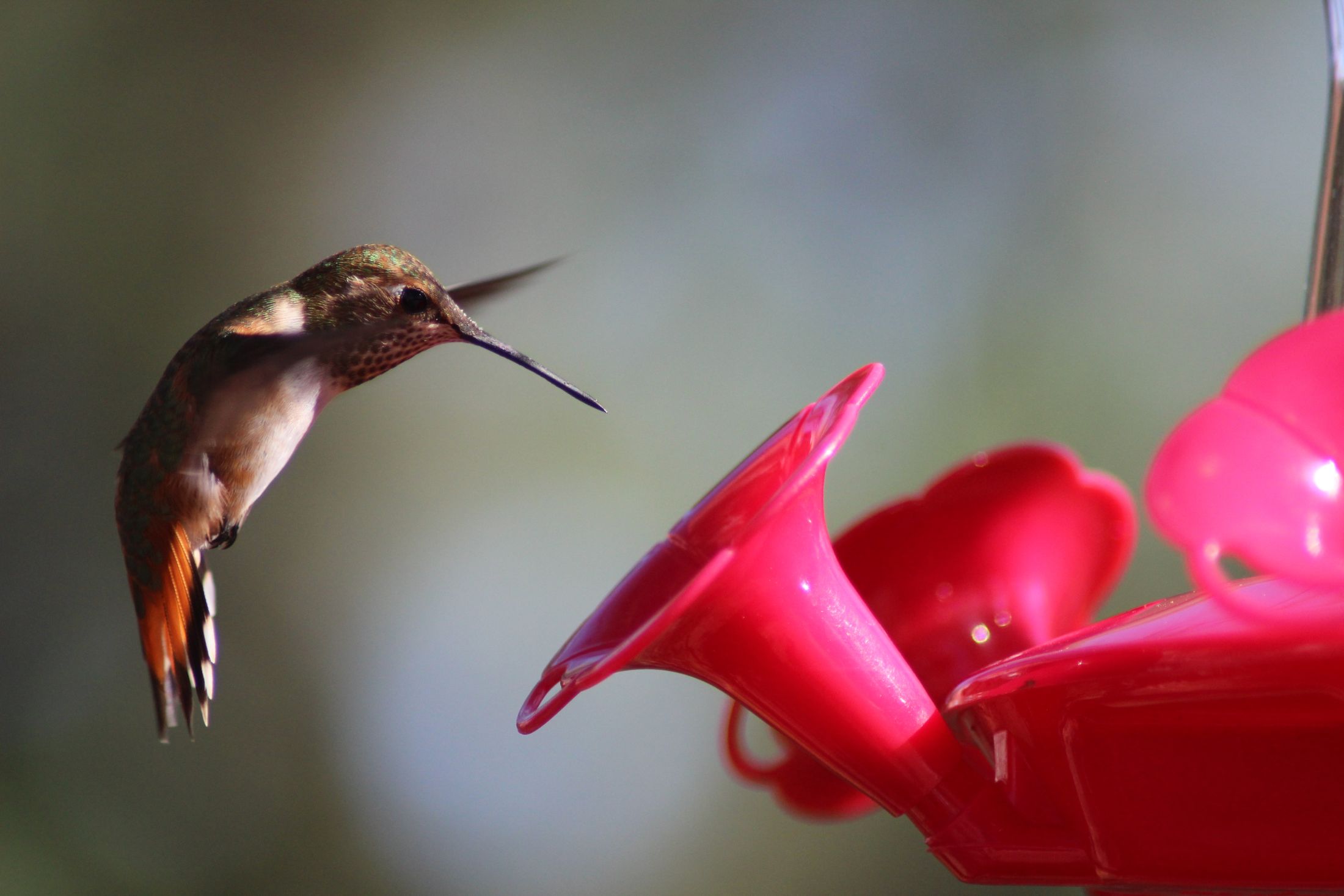
A hummingbird feeder is a must. Hummingbirds have lightning-fast metabolism and must eat every 10-15 minutes. Now think about a hummingbird that’s also occupied with finding a nesting spot, building a nest, incubating eggs, and then feeding the hatchlings. For nesting hummingbirds, it’s even more vital that they have a close by, reliable food source. Consider hanging more than one hummingbird feeder in your yard, spacing them 15-20 feet or more away from each other, to avoid hummingbirds fighting at your feeders. (And opt for clear nectar, as those with the red dye may be harmful to our hummer friends.)
Shelter
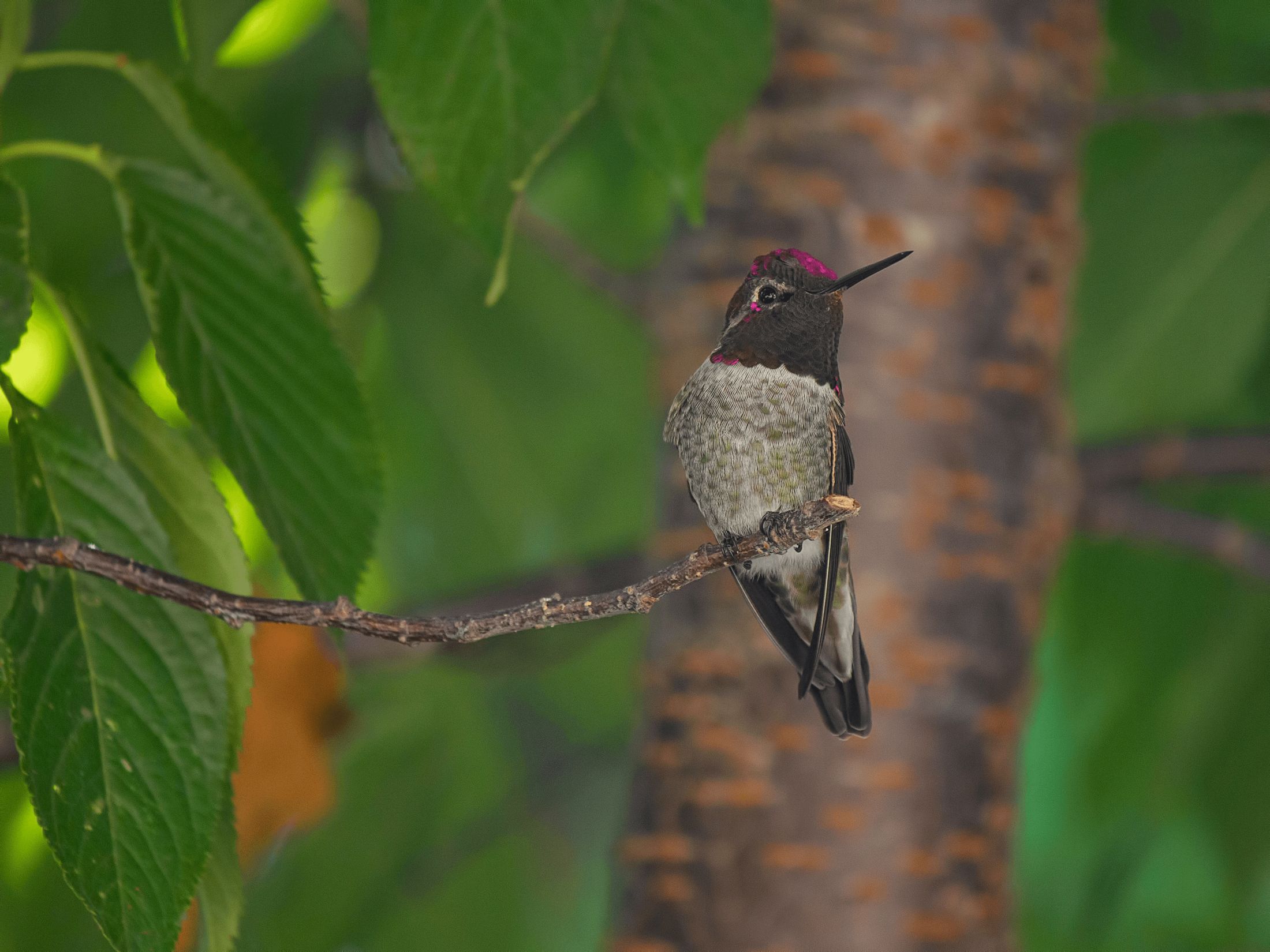
Nesting hummingbirds look for shrubs and trees, often building their nests high off the ground, far away from predators. If you haven’t already, consider planting a few native plants in a hummingbird garden full of colorful blooms and thick greenery. Even a pot or two of nectar-producing flowers like salvia and bee balm will increase the chances that hummingbirds will stop and investigate.
And when it comes to shelter, consider a space keeping a separate space in your yard where your pets can’t roam. Hummingbirds won’t nest in a spot with predators, and that’s how they see your friendly dog and cat!
Water
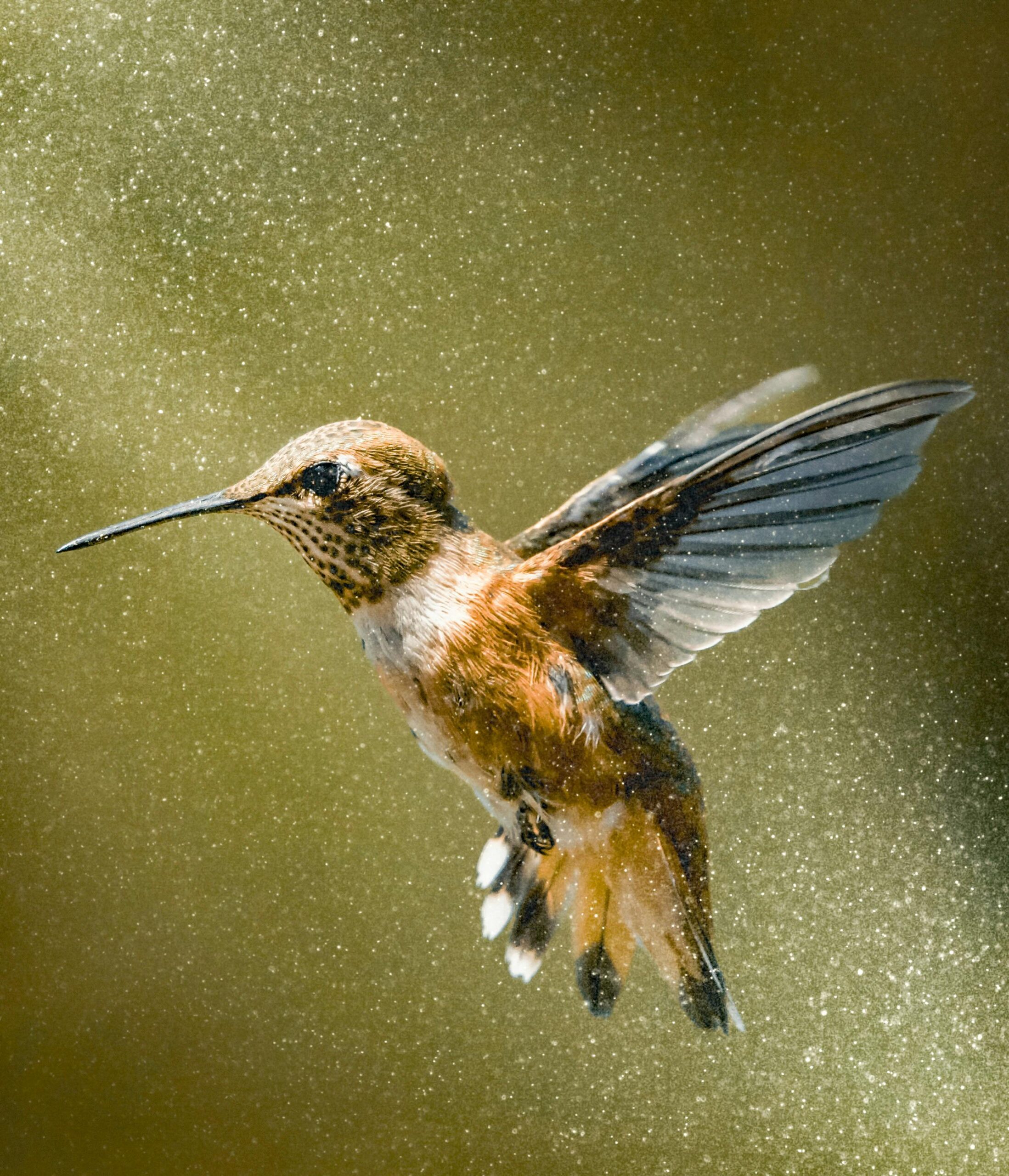
While birdbaths do work for hummingbirds, they prefer their water source a bit gentler. That’s why bubblers and misters are excellent additions to your birdbath or fountain. You’ll often see hummingbirds darting through misted water (ever had a hummingbird dart back and forth over the spray of the hose while watering your plants?). And they may still use a regular birdbath, provided the water is very shallow.
Nesting Materials

This one is optional, but effective. Hummingbirds use all sorts of materials to build their nests. This can include things you provide, such as light-colored yarn or wool, down from old comforters, clean pet hair, and natural cotton pieces are all excellent (and safe) choices.
What Does a Hummingbird Nest Look Like?
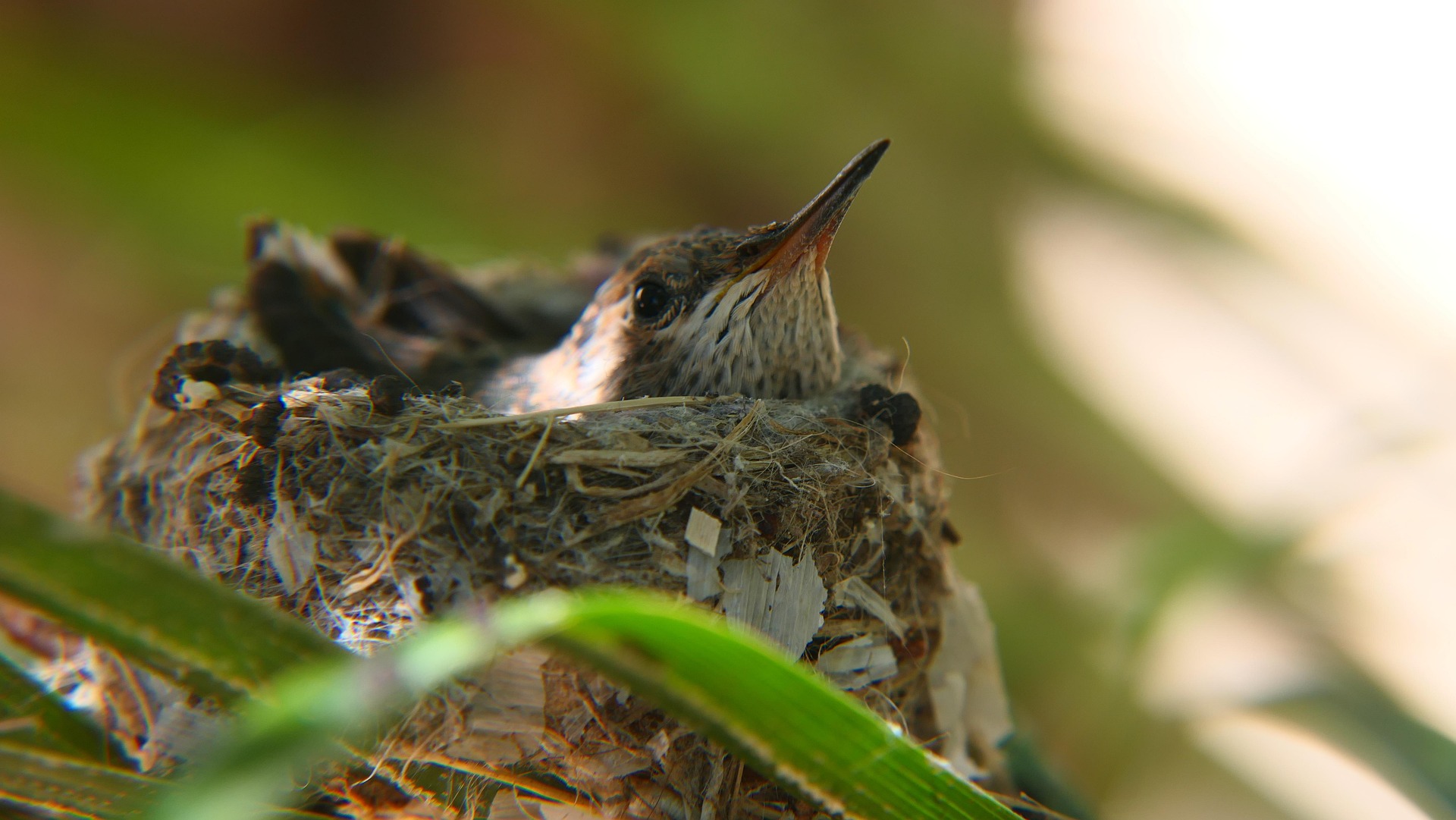
Whether you spot something up a tree, in a bush, or on the side of your house, it’s important to identify a hummingbird nest. A hummingbird nest is typically small (1-2 inches in size) and shaped like a little cup or bowl. Since most types of hummers like to nest high (10’ or higher) in trees and shrubs, their nests may be difficult to spot, along with the fact that they are made from natural materials that camouflage them. If you have trees in your yard, look in the crooks of tree branches, a favorite nesting spot for hummers. (And Rufous Hummingbirds often build nests in drooping branches.) But remember not to get too close to the nest, or you’ll risk stressing the mother bird, even causing her to abandon her nest.
If you don’t want hummingbirds to build nests on your house, here’s how to safely deter them.
What are a Hummingbird’s Nesting Habits?
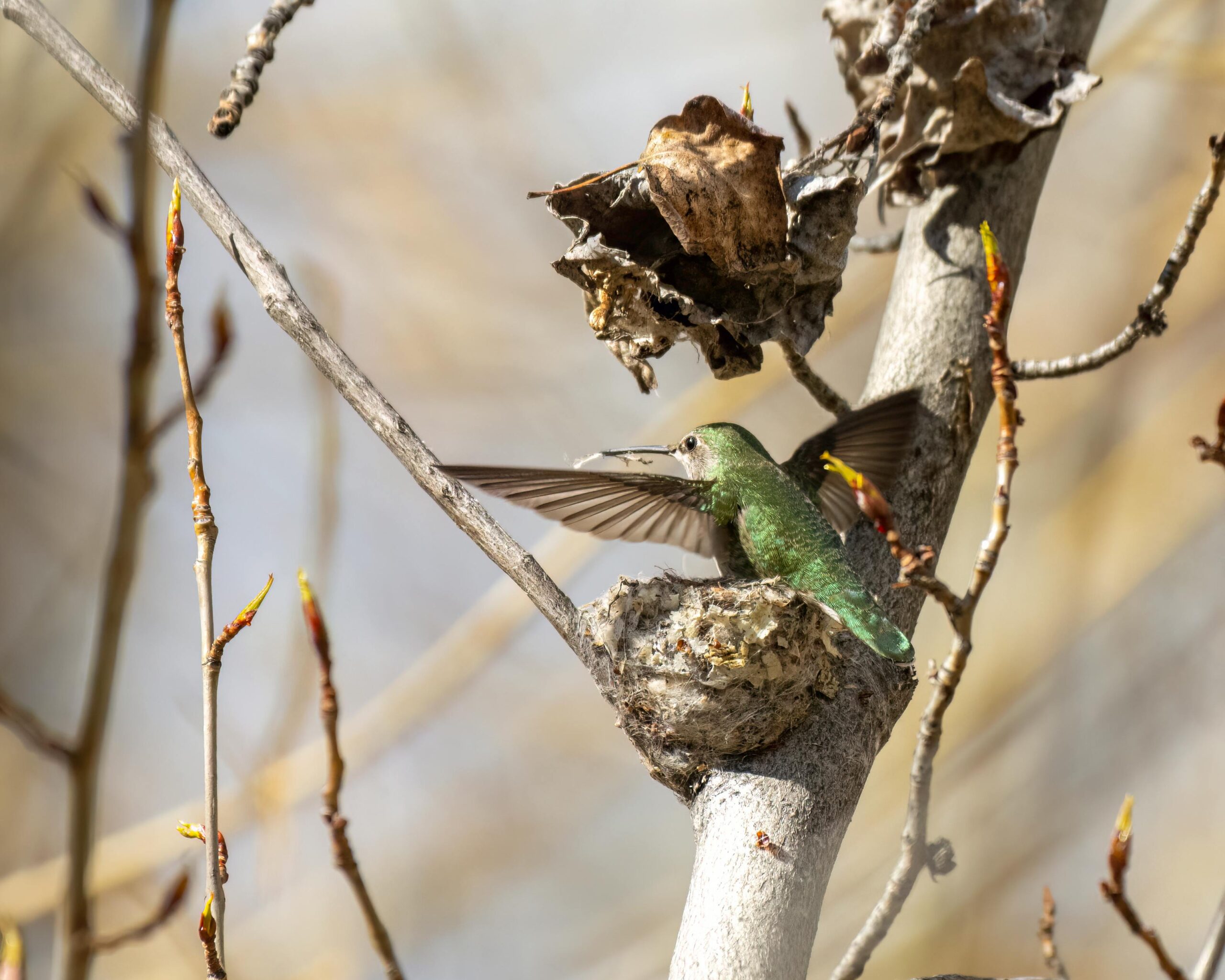
In nearly all hummingbird species, the female hummingbird makes the nest, incubates the eggs, and cares for the young hatchlings. Nest building can take up to a week to collect materials and construct, and hummers work for several hours a day on it. This makes it easier to spot nesting hummers in your yard—look for one that visits the same spot multiple times a day, and you may have a nest nearby!
The incubation for most hummingbird eggs is between 14-21 days, during which time the female hummer only leaves the nest to feed. When a baby hummingbird hatches, it is naked and blind (or altricial), and dependent on its mother for care. The mother will regurgitate nectar and insects to feed her new hatchlings, which will remain in the nest for another three weeks—and then it’s time to fly!
Join Us for the Wings and Wild Things Festival

If you love hummingbirds—and birds of all kinds—join Chirp for a festival like no other! The Wings and Wild Things Festival is a day-long retreat filled with guided bird and nature walks, live animal presentations, and crafts and fun for the whole family. Learn more and register to reserve your spot now!

